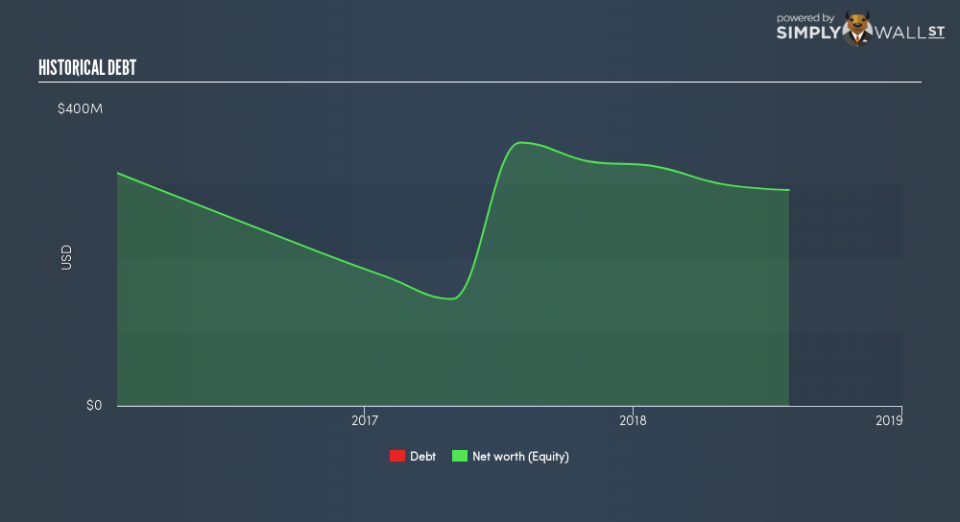What Investors Should Know About Cloudera Inc’s (NYSE:CLDR) Financial Strength

The direct benefit for Cloudera Inc (NYSE:CLDR), which sports a zero-debt capital structure, to include debt in its capital structure is the reduced cost of capital. However, the trade-off is CLDR will have to adhere to stricter debt covenants and have less financial flexibility. While zero-debt makes the due diligence for potential investors less nerve-racking, it poses a new question: how should they assess the financial strength of such companies? I recommend you look at the following hurdles to assess CLDR’s financial health.
See our latest analysis for Cloudera
Is CLDR right in choosing financial flexibility over lower cost of capital?
Debt capital generally has lower cost of capital compared to equity funding. Though, the trade-offs are that lenders require stricter capital management requirements, in addition to having a higher claim on company assets relative to shareholders. CLDR’s absence of debt on its balance sheet may be due to lack of access to cheaper capital, or it may simply believe low cost is not worth sacrificing financial flexibility. However, choosing flexibility over capital returns is logical only if it’s a high-growth company. CLDR’s revenue growth over the past year is a double-digit 33% which is considerably high for a small-cap company. So, it is acceptable that the company is opting for a zero-debt capital structure currently as it may need to raise debt to fuel expansion in the future.
Does CLDR’s liquid assets cover its short-term commitments?
Given zero long-term debt on its balance sheet, Cloudera has no solvency issues, which is used to describe the company’s ability to meet its long-term obligations. However, another measure of financial health is its short-term obligations, which is known as liquidity. These include payments to suppliers, employees and other stakeholders. At the current liabilities level of US$301m, it seems that the business has been able to meet these obligations given the level of current assets of US$495m, with a current ratio of 1.64x. Generally, for Software companies, this is a reasonable ratio since there is a bit of a cash buffer without leaving too much capital in a low-return environment.
Next Steps:
Having no debt on the books means CLDR has more financial freedom to keep growing at its current fast rate. Since there is also no concerns around CLDR’s liquidity needs, this may be its optimal capital structure for the time being. Going forward, its financial position may change. This is only a rough assessment of financial health, and I’m sure CLDR has company-specific issues impacting its capital structure decisions. You should continue to research Cloudera to get a better picture of the stock by looking at:
Future Outlook: What are well-informed industry analysts predicting for CLDR’s future growth? Take a look at our free research report of analyst consensus for CLDR’s outlook.
Valuation: What is CLDR worth today? Is the stock undervalued, even when its growth outlook is factored into its intrinsic value? The intrinsic value infographic in our free research report helps visualize whether CLDR is currently mispriced by the market.
Other High-Performing Stocks: Are there other stocks that provide better prospects with proven track records? Explore our free list of these great stocks here.
To help readers see past the short term volatility of the financial market, we aim to bring you a long-term focused research analysis purely driven by fundamental data. Note that our analysis does not factor in the latest price-sensitive company announcements.
The author is an independent contributor and at the time of publication had no position in the stocks mentioned. For errors that warrant correction please contact the editor at editorial-team@simplywallst.com.

